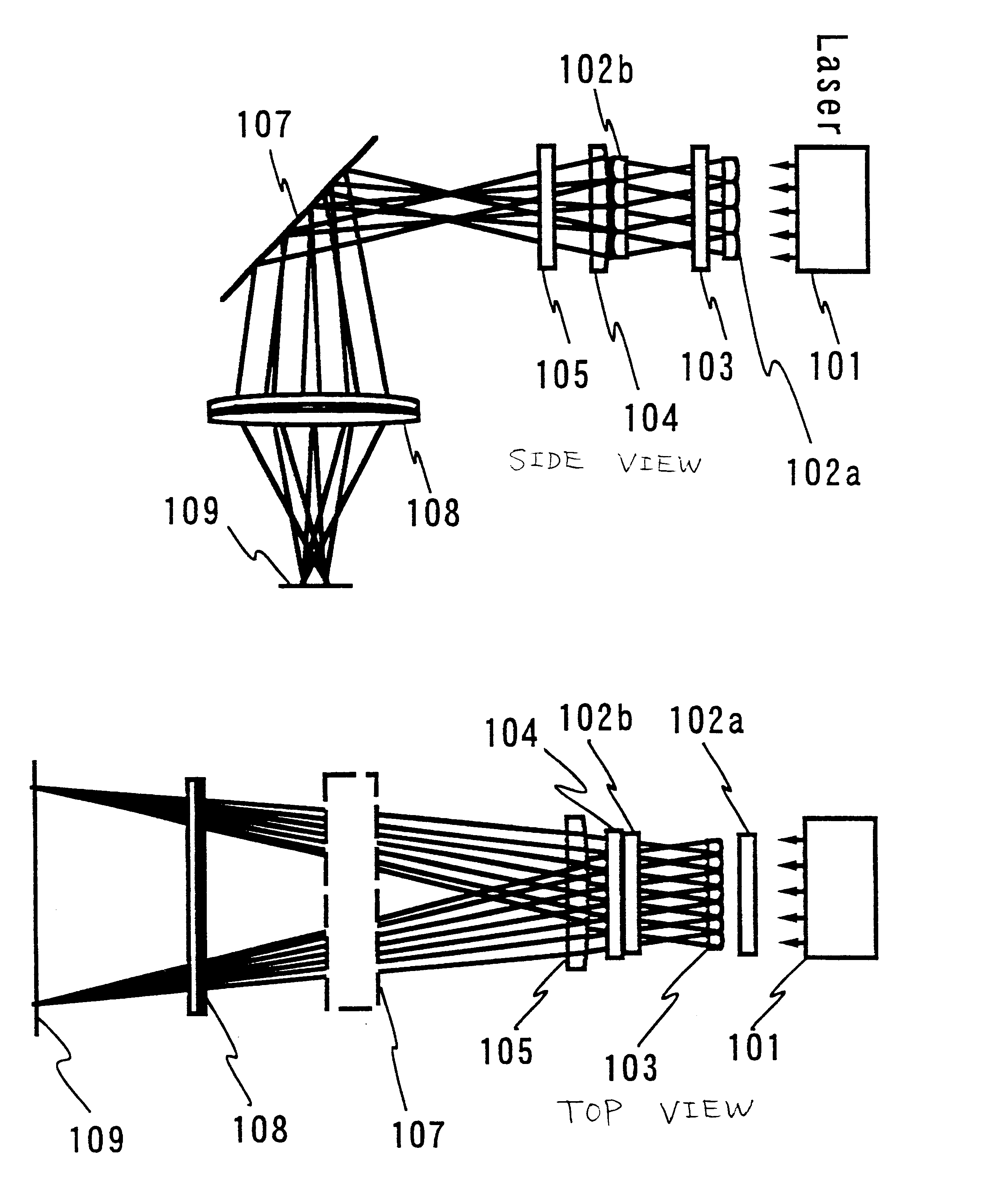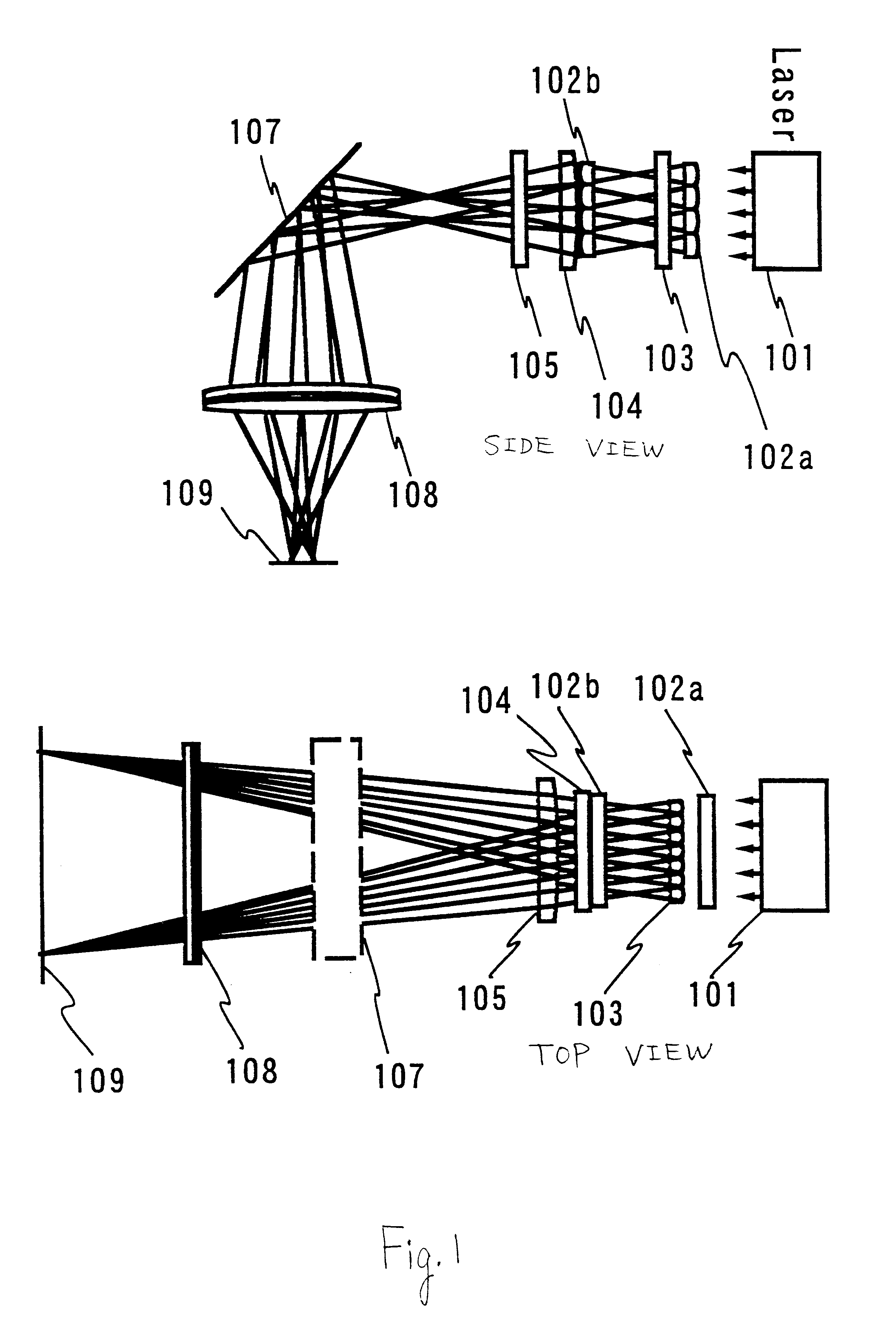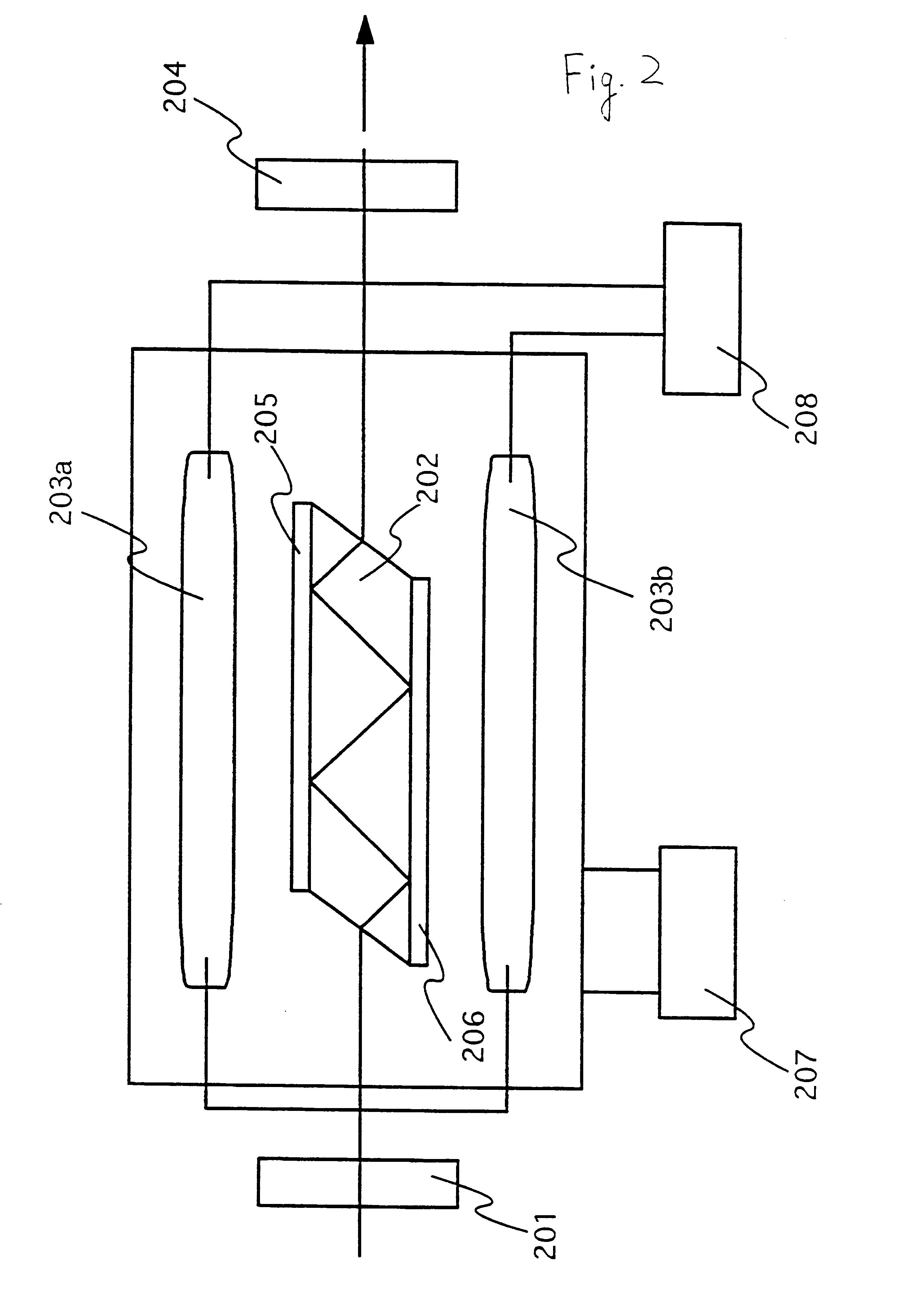Laser irradiation apparatus, laser irradiation method, and method for manufacturing a semiconductor device
a laser irradiation and semiconductor technology, applied in metal working apparatus, transistors, manufacturing tools, etc., can solve the problems of extremely low absorption coefficient of laser beam with respect to silicon films, interference with each other, and interference with the above-mentioned interferen
- Summary
- Abstract
- Description
- Claims
- Application Information
AI Technical Summary
Problems solved by technology
Method used
Image
Examples
embodiment 1
In the present embodiment, an example will be described in which a polycrystalline silicon film is irradiated with a laser beam. The laser irradiation device described in the above embodiment mode is used.
A Corning glass 1737 having a thickness of 0.7 mm is used as a substrate. The substrate has sufficient durability if it is used under 600.degree. C. An SiO.sub.2 film is formed in 200 nm on one surface of the substrate by a plasma CVD method. Further, an a-Si film is formed in 55 nm on the SiO.sub.2 film. Any other film forming method, for example, a sputtering method may be used.
Next, the above-mentioned a-Si film is crystallized by the method disclosed in Japanese Patent Laid-Open No. 7-130652. The method will be described briefly in the following. The above a-Si film is coated with a nickel acetate water solution having a concentration of 10 ppm and then is heated in a nitrogen atmosphere at 550.degree. C. for 4 hours, whereby the a-Si film is crystallized. It is recommended tha...
embodiment 2
can be combined with Embodiment 1.
Embodiment 3
Shown in Embodiment 3 is an example of linearly synthesizing the third harmonic and the fourth harmonic of the YAG laser at the irradiated surface as the light source of the laser beam.
The advantage of using the third harmonic and the fourth harmonic is that both laser beams have an extremely high absorption coefficient with respect to silicon films. By mixing the fourth harmonic with the third harmonic, the influence of interference in the irradiated surface can thus be remarkably reduced.
A method of Embodiment 3 is that a non-linear optical element which forms the third harmonic and the fourth harmonic at the same time is used instead of the non-linear optical element used in the Embodiment Mode of the present invention. Furthermore, a similar optical system for processing the fourth harmonic is used in place of the portion of the optical system, which processes the second harmonic. The fourth harmonic may be entered into the optical s...
embodiment 3
can be combined with Embodiment 1.
Embodiment 4
In the present embodiment, an example of a laser irradiation device for mass production will be described with reference to FIG. 14. FIG. 14 is a top view of a laser irradiation device.
A substrate is carried from a load / unload chamber 1401 by the use of a carrying robot arm 1403 mounted in a transfer chamber 1402. First, the substrate is aligned in an alignment chamber 1404 and then is carried to a pre-heat chamber 1405. In the pre-heat chamber 1405, the substrate is previously heated to a desired temperature of about 300.degree. C., for example, by the use of an infrared lamp heater. Then, the substrate is placed in a laser irradiation chamber 1407 via a gate valve 1406 and then the gate valve 1406 is closed.
A laser beam is emitted by the laser oscillator 1400 described in the embodiment mode and then is bent downward 90 degrees by a mirror (not shown) placed directly above a quartz window 1410 via an optical system 1409 and is transfor...
PUM
| Property | Measurement | Unit |
|---|---|---|
| wavelength | aaaaa | aaaaa |
| transmittance | aaaaa | aaaaa |
| thickness | aaaaa | aaaaa |
Abstract
Description
Claims
Application Information
 Login to View More
Login to View More - R&D
- Intellectual Property
- Life Sciences
- Materials
- Tech Scout
- Unparalleled Data Quality
- Higher Quality Content
- 60% Fewer Hallucinations
Browse by: Latest US Patents, China's latest patents, Technical Efficacy Thesaurus, Application Domain, Technology Topic, Popular Technical Reports.
© 2025 PatSnap. All rights reserved.Legal|Privacy policy|Modern Slavery Act Transparency Statement|Sitemap|About US| Contact US: help@patsnap.com



